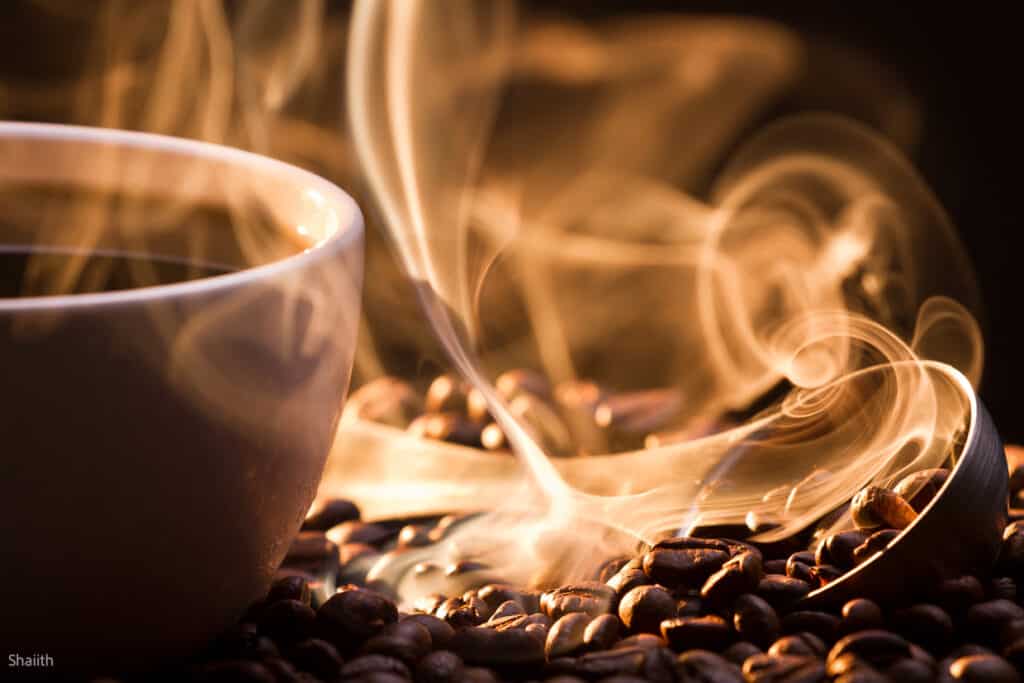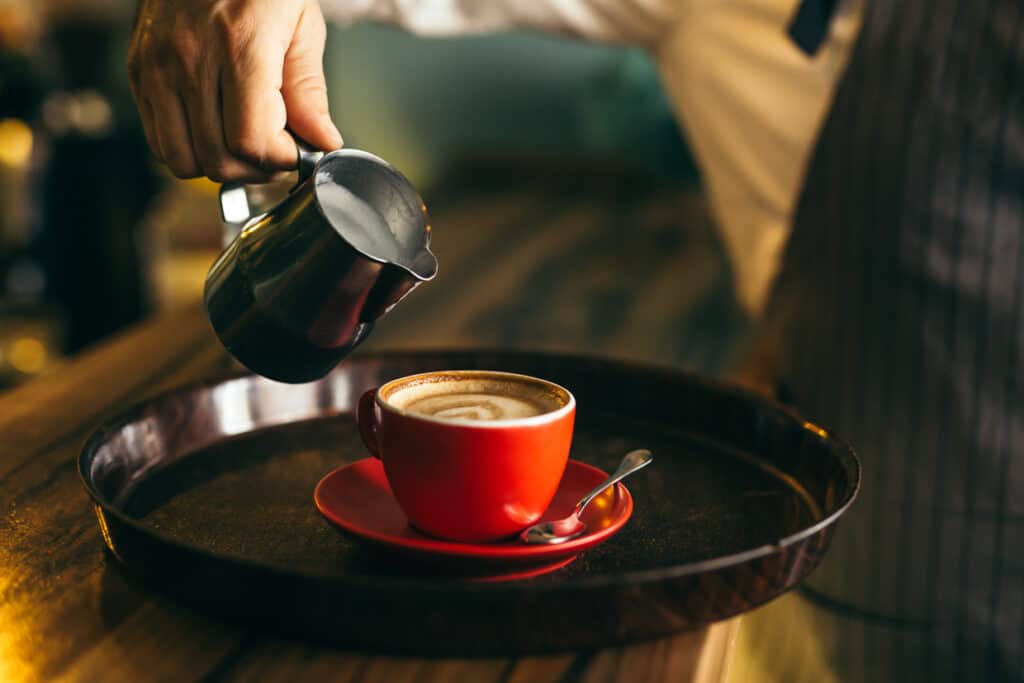If you’re a coffee drinker, there’s nothing quite like that first sip in the morning — it’s the whole reason some people get up in the morning at all — but how much do you know about the different types of coffee? Learn what they are and become an expert on your morning fix.

For many people, coffee is an essential part of their morning routine. That first sip of hot, steaming coffee is what sets the tone for the rest of the day. However, did you know that there are several different types of coffee beans that can drastically affect the flavor of your morning cup?
The four common types of coffee beans are arabica, robusta, excelsa and liberica. Each has its own unique flavor and other characteristics.
Arabica coffee
Arabica coffee beans are widely considered to be the highest quality, and for good reason. These beans are grown at high altitudes, typically between 2,000 and 6,500 feet above sea level in countries such as Brazil and Colombia.
The high altitude and cooler temperatures where arabica beans are grown make them more expensive to produce than other types of coffee beans. These factors also help them produce beans with more nuanced flavors than others.
Arabica beans are known for their smooth, fruity flavor, which is often described as having notes of chocolate, caramel and berries. Their flavor makes them a popular choice for espresso drinks and for baked goods like pumpkin spice latte cake or coffee brownies.

One of the reasons arabica coffee is so highly regarded is because of its lower caffeine content compared to robusta beans. While caffeine content can vary based on factors such as roast level and brewing method, arabica beans typically contain around 1 percent caffeine, while robusta beans can contain up to 2.7 percent. This makes arabica a popular choice for those who prefer a milder coffee buzz.
Here’s are some interesting facts about arabica coffee:
- Arabica coffee beans are what you’ll find in your favorite Starbucks coffee drinks.
- The high altitude and cooler temperatures where arabica beans are grown make them more expensive to produce than other types of coffee beans.
- Light and medium roasted arabica beans make delicious drip or pour-over coffee. Dark roasted arabica beans are ideal for cold-brew coffee.

Robusta coffee
Robusta beans are the second most widely produced type of coffee bean after arabica beans. They are grown at lower altitudes, typically between sea level and 2,600 feet above sea level, in countries such as Vietnam, Brazil and Indonesia. While they are often considered to be of lower quality than arabica beans, robusta beans have their own unique characteristics that make them a popular choice for coffee lovers.
As mentioned above, robusta coffee beans have more caffeine than arabica beans. They also have a very different flavor profile. Robusta beans are known for their strong, bold flavor, which is often described as having notes of chocolate, nuts and earthy tones.
Robusta beans also have a higher acidity than arabica, which can make them taste more bitter. While some coffee drinkers may find the strong flavor of robusta to be overpowering, others appreciate the depth and complexity that these beans can add to a coffee blend. You’ll often find them in blends along with arabica beans, which gives you the best of both worlds.
Robusta beans are prized for espresso blends because of their ability to produce a thick, creamy crema, the creamy foam that forms on the top of a masterfully produced cup of espresso. And they show up frequently as instant coffee due to their ability to retain flavor even after being processed.

Excelsa coffee
Excelsa coffee is less common. It is grown primarily in Vietnam, Philippines and India.
Excelsa coffee is another high-altitude coffee like arabica. The beans have a distinct, fruity flavor that is often compared to a combination of tart fruit and dark chocolate, making them a unique and interesting addition to any coffee blend.
You don’t see excelsa coffee as often as the others, primarily because it is difficult to grow. Excelsa trees are highly sensitive to environmental factors like temperature and humidity, making them challenging to cultivate.
While excelsa coffee may not be as widely known as other types of coffee beans, it has its own unique characteristics that make it worth exploring for coffee lovers. The fruity, chocolatey flavor of excelsa beans can add an interesting twist to any coffee blend, and their rarity adds to their appeal. If you’re looking to expand your coffee palate and try something new, excelsa coffee is definitely worth seeking out.

Liberica coffee
Liberica coffee beans are one of the lesser-known types and are primarily grown in the Philippines. These beans are grown at low altitudes, typically between sea level and 2,300 feet above sea level. While liberica beans are difficult to find and are often more expensive than other types, they are worth exploring for coffee lovers who are looking for a unique and interesting coffee experience.
One of the reasons liberica coffee is less common than other types is because, like excelsa coffee, the beans are difficult to grow. Liberica trees are highly susceptible to disease, and their low yield makes them less profitable than other types. As a result, liberica beans are a specialty item often sought after by coffee connoisseurs who are looking for something new and interesting.
The flavor profile of liberica coffee is one of its most unique characteristics. These beans have a distinct, smoky flavor, often likened to cigars, with notes of dark chocolate and a slightly floral aroma. While some coffee drinkers may find the smoky flavor to be overpowering, others appreciate the depth and complexity that these beans can add to a coffee blend.
Liberica beans are often used in blends with other types to add flavor complexity. Some specialty coffee shops and roasters even source liberica beans from specific regions or farms, as the terroir can greatly impact their flavor. While these beans may be difficult to find and pricier than other types, their unique flavor makes them worth seeking out if you’re looking for new twists on your favorite beverage.

Wrapping up
Coffee is a diverse and complex beverage that comes in many different varieties. Understanding the differences between the various types of coffee beans can help you choose the perfect coffee for your taste preferences. Whether you prefer the delicate flavors of arabica coffee or the bold taste of robusta, there’s a type of coffee out there for everyone. So, next time you order a cup of coffee, take a moment to appreciate the unique flavors and characteristics of the beans that went into making it.